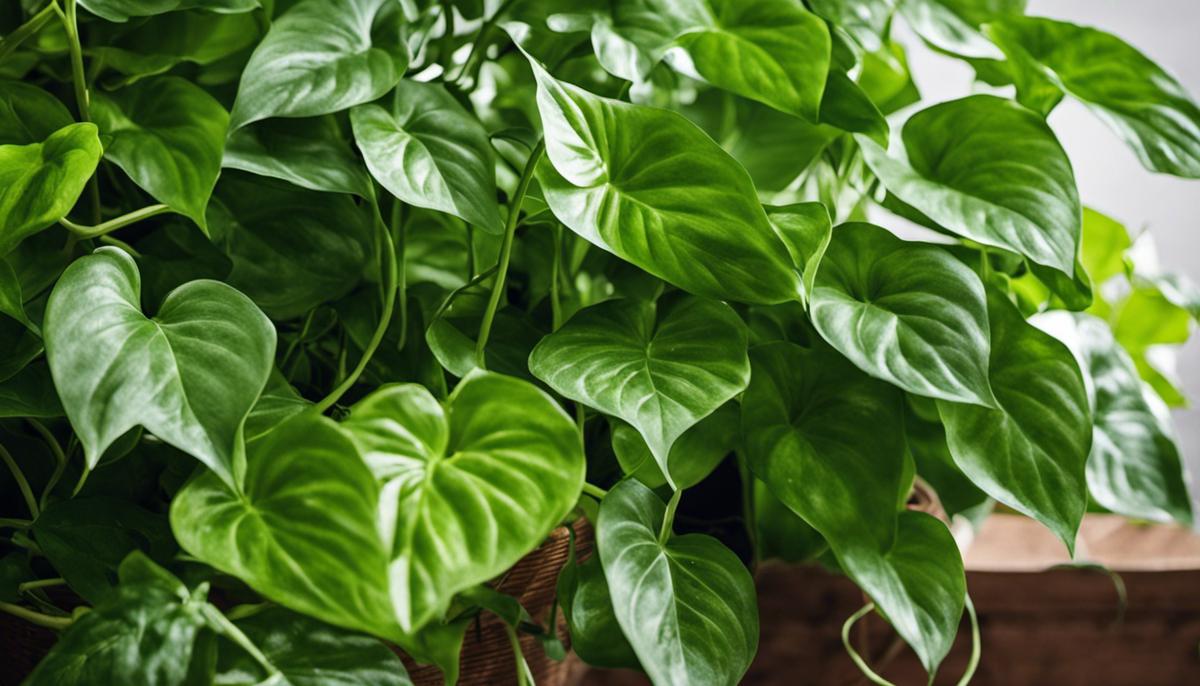Is Your Cat Safe? Pothos Plant Poisoning in Felines Explained

If you’re a cat lover and a plant enthusiast, you’ve probably thought about combining these two passions in your home. Among the variety of houseplants to choose from, the pothos plant, with its elegant, heart-shaped leaves and flexible growing style, is a common choice. However, having such a plant can cause distressing concerns when it comes to the safety of your feline friends. In the light of these concerns, understanding the potential harm that lurks in the leaves of a pothos plant becomes imperative. This article endeavours to provide an in-depth understanding of the pothos plant, its enticing allure as a houseplant, and the factors that make it toxic for cats.
Understanding the Pothos Plant and its Toxicity
When it comes to co-habitation of plants and pets, especially cats, caution cannot be overemphasized, particularly when dealing with plants like the ever-popular pothos. Known for its low maintenance and appealing aesthetic, the pothos plant is unfortunately notorious for being harmful to our feline friends. Isn’t it curious how something so attractive can, at the same time, pose a threat to our cherished pets? So let’s delve right into what exactly makes this lush, viney green plant a potential hazard.
Underneath the attractive, heart-shaped leaves of the pothos plant lurks a potential danger for cats – the culprit, simply put, is calcium oxalate crystals. These naturally occurring substances in the plant can trigger severe inflammatory responses when ingested by cats, leading to a host of problems, such as oral irritation, excessive drooling, vomiting, and difficulty swallowing. It’s a rather worrying list, isn’t it? As much as we adore the vibrancy these plants lend to our home décor, the safety of our kitties absolutely must take priority.
Even though the charm of a pothos plant can be quite alluring, the harmful aspects it presents to our dear cats cannot be ignored. It’s always advisable to either avoid having these plants if you have cats or to place them in locations completely out of reach of your curious feline companions. Remember, the companionship of our fuzzy, purring family members brings far more joy and comfort than the most stunning pothos ever could! So let’s be mindful and create a safe, loving environment, not only for our children but for our four-legged family members as well.

Symptoms and First Aid for Pothos Plant Poisoning
Continuing the discussion on pet safety, it’s fundamental to understand the critical signs of distress in your feline friends in case they come in contact with lethal pothos plants.
Despite your best efforts, cats’ curiosity might lead them into trouble.
If symptoms such as swollen lips or tongue, excessive drooling, or difficult or painful swallowing are noticed, these could point to pothos plant poisoning.
Other indications can include abnormal pawing at the mouth, hoarse meow, or loss of appetite.
It’s important to familiarize yourself with these signs, as this knowledge could potentially save your pet’s life should they ever ingest this toxic plant.
Now, if the above symptoms are observed, it’s crucial to act swiftly.
Remove any plant material from the cat’s mouth or fur if it’s safe and practical to do so.
However, refrain from inducing vomiting at home, as this could cause more harm than good.
The ideal step is to reach out to a veterinarian immediately.
Have their contact information easily accessible and keep transport handy for such emergencies, make sure you are prepared beforehand.
Time is of the essence in toxin ingestion cases, and prompt professional help is the key to recovery.
If a quick visit to the vet is not feasible, calling the Pet Poison Helpline can also provide immediate aid.
Engaging attention to your cats’ well-being does not end with concealing harmful plants or creating pet-friendly spaces, but extends to recognizing potential signs of danger and knowing the right steps to alleviate it.
Let’s assure that their curiosity doesn’t cost them by remaining vigilant and knowledgeable always because a safe pet is a happy pet!
Remember, maintaining a cozy home for your family also involves a safe one for your little furballs.

As we navigate through the joyous journey of pet ownership, their safety remains our primary concern. Nature has a paradoxical way of presenting beauty with danger, as in the case of the pothos plant. This innocuous-looking houseplant can pose significant health risks to our beloved cat companions. Ensuring to look out for the symptoms mentioned and following the first-aid measures can make all the difference in the world if your feline friend has been exposed to the plant. Ultimately, it is the responsibility of every pet parent to make informed decisions about our home environment. Knowledge is power, and in this case, it can potentially save a life.



